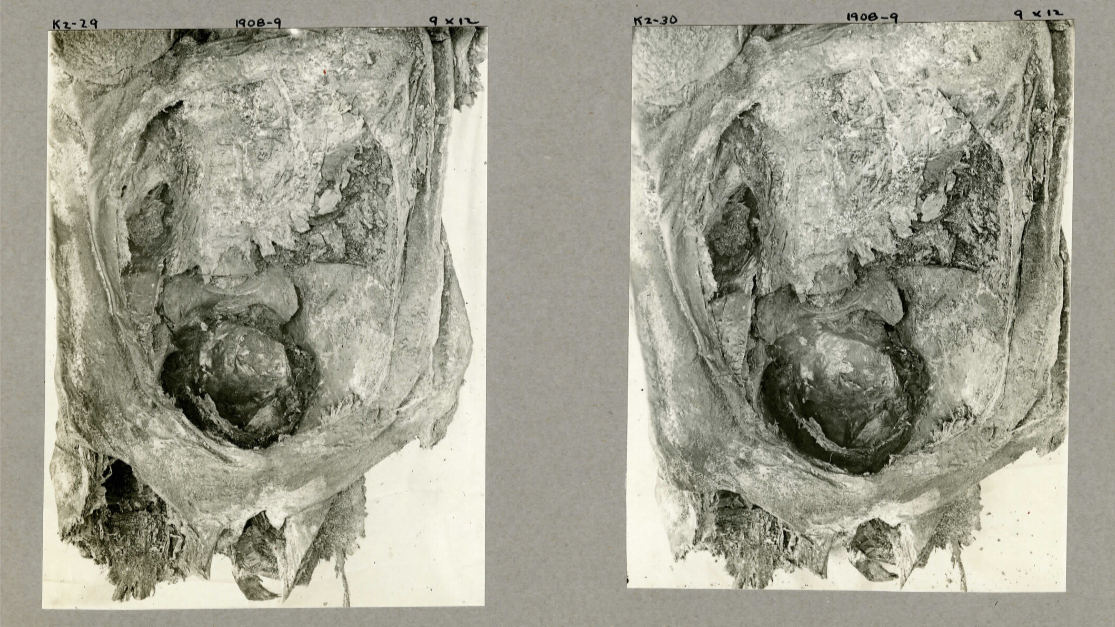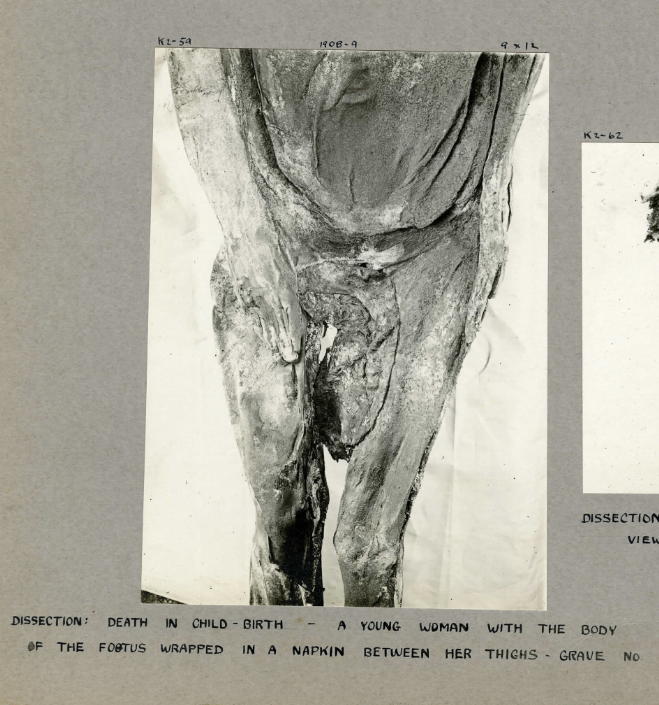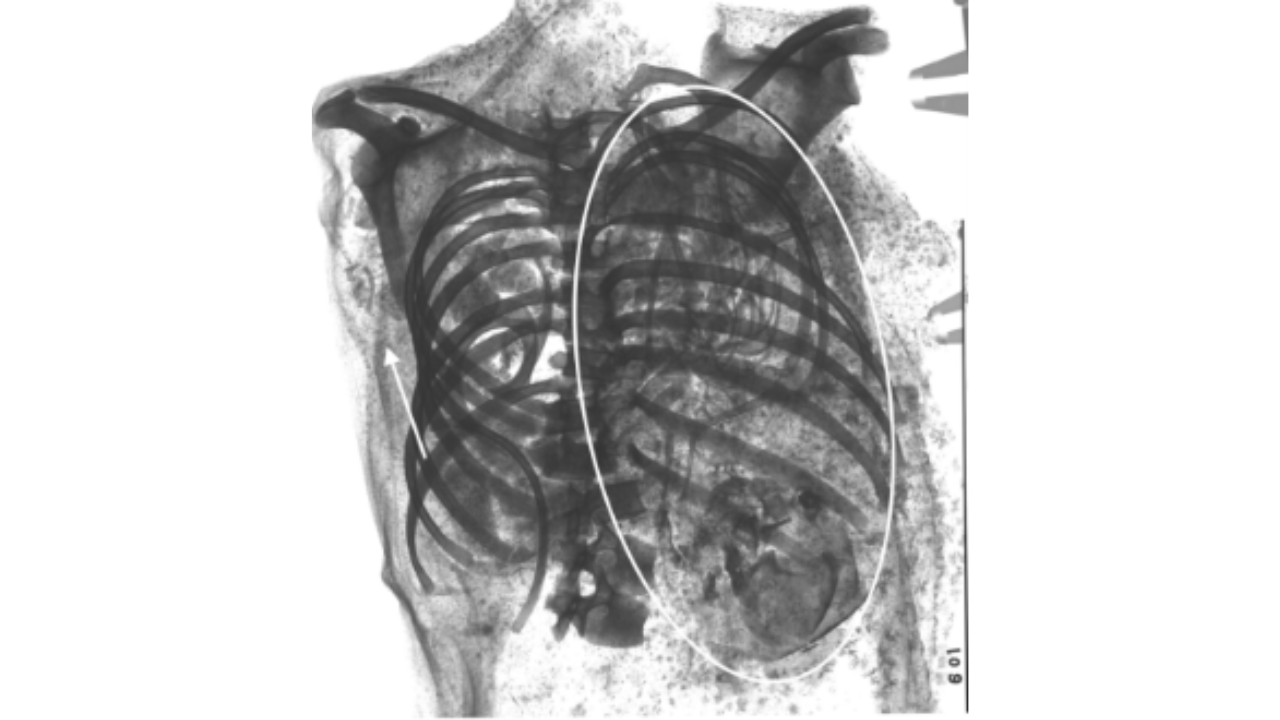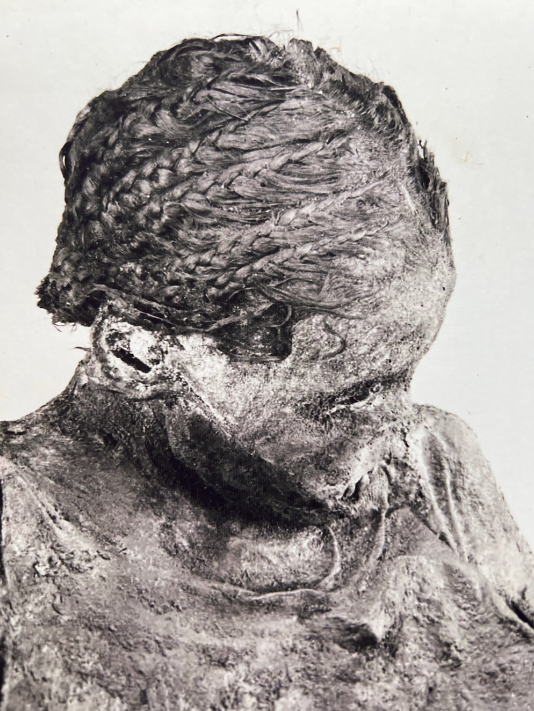Ancient Egyptian teenager died while giving birth to twins, mummy reveals
An ancient Egyptian mummy with a fetus tucked between its legs and another lodged inside the chest cavity — the first known of its kind — shows the mother died while giving birth to twins.

The ancient remains of an unborn fetus found in the headless mummy of an Egyptian teenager shows she died while giving birth to twins, a new study confirms.
When archaeologists excavated and unwrapped the mummy in 1908, they discovered the bandaged body of a fetus and the remains of a placenta wedged between the girl's legs. Field notes from the time reveal the researchers concluded the fetus was related to the mummified female — a girl between 14 and 17 years old who lived in ancient Egypt sometime between the Late Dynastic (from around 712 to 332 B.C.) and Coptic period (between A.D 395 and 642). Researchers incised the mother's abdomen and found the fetus' skull stuck in the birth canal, indicating the girl had died from complications during childbirth.
But it wasn't until a century later that researchers discovered a second fetus, this time mysteriously lodged in the girl's chest.
"This is the first mummy of its kind discovered," said study lead author Francine Margolis, a U.S.-based independent archaeologist. While there are many known burials of women who died in childbirth in the archaeological record, "there has never been one found in Egypt," Margolis told Live Science in an email.
Related: Ancient Egyptian children were plagued with blood disorders, mummies reveal
In 2021, researchers announced the discovery of a pregnant Egyptian mummy, but other experts challenged the results and concluded the woman wasn't pregnant when she died in a 2022 study.

Margolis first studied the mummy excavated in 1908 while writing her master's thesis in anthropology at George Washington University (GWU) in Washington, D.C. on female pelvic morphology in 2019. "I CT scanned her to obtain her pelvic measurements," Margolis said. "That is when we discovered the second fetus."
Sign up for the Live Science daily newsletter now
Get the world’s most fascinating discoveries delivered straight to your inbox.
The 3D images showed that the remains of a fetus, which no previous records mentioned, had become lodged in the girl's chest. Margolis and David Hunt, co-author of the new study and an anthropologist at GWU, X-rayed the mummy to obtain a clearer picture of the fetal remains.
"When we saw the second fetus we knew we had a unique find and a first for ancient Egyptian archaeology," Margolis said.

For the new study, published Dec. 21 in the International Journal of Osteoarchaeology, the researchers re-examined the mummy's torso and the external fetus to confirm the teenager's cause of death. They also reviewed and compiled notes and photographs taken during the 1908 excavations.
Margolis and Hunt found that the girl died in labor after the head of the first fetus became trapped in the birth canal, she said. The head of a fetus exiting the womb during childbirth is usually tucked to its chest to enable passage through the pelvis, according to the study. The researchers think that in this case, the fetus' head was untucked in a position that was too broad to get through and became stuck.
Results from the 2019 analysis showed the mother stood around 5 feet tall (1.52 meters) and weighed between 100 and 120 pounds (45 to 55 kilograms). Her small size and young age may have contributed to her unsuccessful delivery of the twins, the researchers noted in the new study.

The mother's mummified head is missing, which limits the researchers' knowledge of her health, Margolis said. "If we found her head and her teeth are present, destructive testing on teeth and hair could provide information on her diet and metabolic stress she was experiencing during her life," she said.
It's also unclear how the remains of the second fetus ended up in the girl's chest. The researchers suggested the diaphragm and other tissues likely dissolved during the mummification process, enabling the small body to migrate upward.
Childbirth in ancient Egypt is poorly documented, according to the study, but existing records suggest twins were undesirable. A papyrus from the third intermediate period (1070 to 713 B.C.), known as the Oracular Amuletic Decree, offered mothers a spell intended to prevent twin births.

Sascha is a U.K.-based staff writer at Live Science. She holds a bachelor’s degree in biology from the University of Southampton in England and a master’s degree in science communication from Imperial College London. Her work has appeared in The Guardian and the health website Zoe. Besides writing, she enjoys playing tennis, bread-making and browsing second-hand shops for hidden gems.









